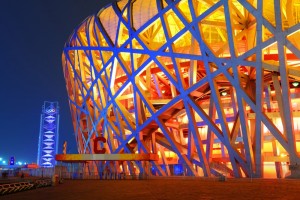The advantages of ETFE tubing
ETFE has been called a material of the future, and for good reason. Technically known as ethylene tetrafluoroethlyhene, ETFE functions as one of the most advanced variations of fluoropolymer, and in turn, presents individuals who work with it a variety of advantages. What makes this fluoropolymer so advantageous?
1. ETFE is mechanically tough.
Compared to other types of fluoropolymer tubing, ETFE tubing is far stronger and more durable, specifically when compared to PTFE, FEP, and PFA at 25 degrees Celsius. ETFE’s strength can be attributed to its chemical structure as a partially, rather than a fully, fluorinated molecule. ETFE maintains a tensile strength of 6100 psi and can bear up to 400 times its own weight, which makes it an ideal option for those in need of ETFE tubing for load-bearing projects or projects with exposure to harsh elements. Despite its impressive durability, ETFE is an extremely lightweight material and can stretch up to three times its length without losing its elasticity. Additionally, ETFE typically remains in optimal condition and does not show any signs of wear for 50 to 60 years, offering customers substantial longevity.
2. ETFE can withstand high temperatures for a long duration of time.
ETFE tubing can be applied to projects that may be subject to up to 300 degrees Fahrenheit or approximately 150 degrees Celsius, one of the highest exposure temperatures among fluoropolymers. Not only can ETFE tubing resist melting in extreme heat, it can do so for a significant duration of time. Interestingly, when layered, ETFE can also serve as a form of insulation for any object it surrounds.
3. ETFE is applicable in a wide variety of industries.
Though often used as part of wiring harnesses or as a liner for objects that depend on chemical resistance, ETFE tubing has proven valuable to those in a variety of industries, including aviation, aerospace, and architecture. Notable ETFE-reliant architectural projects include the biomes of the Eden Project in Cornwall, England, and the roof of the Water Cube built for the 2008 Beijing Olympics. This fluoropolymer’s chemical inertness and high abrasion resistance make it an extremely versatile material for construction. ETFE has also been used in the nuclear industry as ties and cable wraps.
4. ETFE is a strong replacement for glass or plastic.
Because ETFE is a semi-transparent material, it can also be used as a viable replacement for glass or traditional plastic. ETFE is an attractive replacement for glass because it maintains 1% the weight of glass, yet transmits 25% more light and is less expensive to install.
5. ETFE maintains a nonstick surface.
The surface of ETFE tubing doesn’t allow for any build-up, which means it resists dust or particle collection the way some other plastics cannot, and is considered to be a “self-cleaning” material. For projects that could benefit from little to no maintenance, ETFE is an ideal choice.
6. ETFE is a fire-resistant material.
ETFE has been classified as a fire-resistant material and a Class-1 flame retardant after meeting international standards in both of these categories. For this reason, ETFE is a good choice for projects at a higher risk for catching fire and for use as a material in building construction.
These represent some of the many benefits ETFE can provide individuals in need of fluoropolymer tubing for their next engineering, electrical, chemical, or construction project. In what ways will you use ETFE to your advantage?

